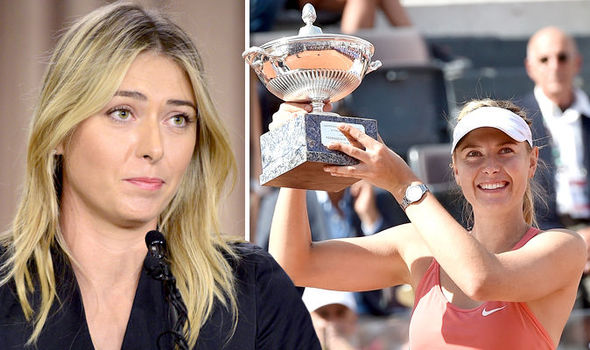
Maria Sharapova, once the most high-profile tennis player in the world, experienced a career that was both illustrious and tumultuous. Rising to global stardom as a teenager, Sharapova’s journey through professional tennis was marked by significant achievements, formidable challenges, and an eventual transition into retirement and business ventures. Here’s an in-depth look at what happened to this tennis icon.

Early Life and Rise to Stardom
Born on April 19, 1987, in Nyagan, Russia, Maria Sharapova moved to the United States at a young age to train at the renowned Nick Bollettieri Tennis Academy. Her dedication and talent quickly paid off when she won the Wimbledon Championships at just 17 years old in 2004, defeating the top-seeded Serena Williams in the final. This victory catapulted her to international fame and marked the beginning of a highly successful career.
Career Achievements
Throughout her career, Sharapova won five Grand Slam titles:
- Wimbledon (2004)
- US Open (2006)
- Australian Open (2008)
- French Open (2012 and 2014)
She also achieved the World No. 1 ranking multiple times, first reaching the top in 2005 and subsequently holding it at various points in her career. Sharapova’s powerful baseline game, mental toughness, and marketability made her one of the most recognizable athletes globally.
Business Ventures and Endorsements
Beyond the court, Sharapova became a marketing powerhouse. She secured lucrative endorsement deals with major brands such as Nike, Canon, and Tag Heuer, among others. In 2012, she launched her own candy line, Sugarpova, which further established her as a savvy businesswoman. Sharapova’s off-court earnings often surpassed her prize money, making her one of the highest-paid female athletes for over a decade.
The Doping Scandal
In March 2016, Sharapova announced that she had failed a drug test at the Australian Open earlier that year. The test revealed the presence of meldonium, a substance that had been added to the World Anti-Doping Agency’s (WADA) banned list starting January 1, 2016. Sharapova explained that she had been taking the drug for a decade for various health reasons and was unaware of its new status as a banned substance.
The International Tennis Federation (ITF) initially handed Sharapova a two-year suspension, which was later reduced to 15 months by the Court of Arbitration for Sport (CAS) upon appeal. The CAS acknowledged that Sharapova did not intend to cheat but found her negligent for not keeping up-to-date with the WADA list.
Return to Tennis and Subsequent Struggles
Sharapova returned to the professional circuit in April 2017. Although she received wild card entries to several tournaments, her comeback was fraught with challenges. Injuries and inconsistent performances plagued her efforts to regain her former dominance. Her ranking fluctuated, and she struggled to make deep runs in major tournaments.
Despite these setbacks, Sharapova managed to win the Tianjin Open in 2017, marking her first title since her return. However, her inability to consistently compete at the highest level signaled that her prime years were behind her.
Retirement and Legacy
On February 26, 2020, Sharapova announced her retirement from professional tennis. In her retirement essay published in Vanity Fair, she reflected on her journey and the physical toll of the sport. Her retirement was a significant moment in tennis, as it marked the end of an era for one of the game’s most influential players.
Sharapova’s legacy is multifaceted. She is remembered for her on-court achievements, including her Grand Slam victories and her fierce rivalry with Serena Williams. Off the court, her impact as a global brand and her ventures into business left a lasting impression. Despite the doping scandal, which undoubtedly marred her career, Sharapova’s contributions to tennis and her role as a trailblazer for female athletes cannot be overlooked.
Post-Retirement Ventures
After retiring, Sharapova continued to focus on her business endeavors. Sugarpova expanded its product line and distribution, and she also invested in various startups and businesses. Her interest in wellness and fitness remained evident, and she explored opportunities in these fields.
Sharapova also authored a memoir, “Unstoppable: My Life So Far,” published in 2017. The book provided insights into her life, career, and the challenges she faced, including the doping scandal.
Conclusion
Maria Sharapova’s journey from a young tennis prodigy to one of the sport’s most high-profile players is a story of talent, perseverance, and resilience. While her career faced significant hurdles, including a high-profile doping suspension, her legacy in tennis and beyond remains impactful. Sharapova’s story is a testament to the complexities of professional sports and the enduring influence of athletes who transcend their sport to become global icons.
Leave a Reply